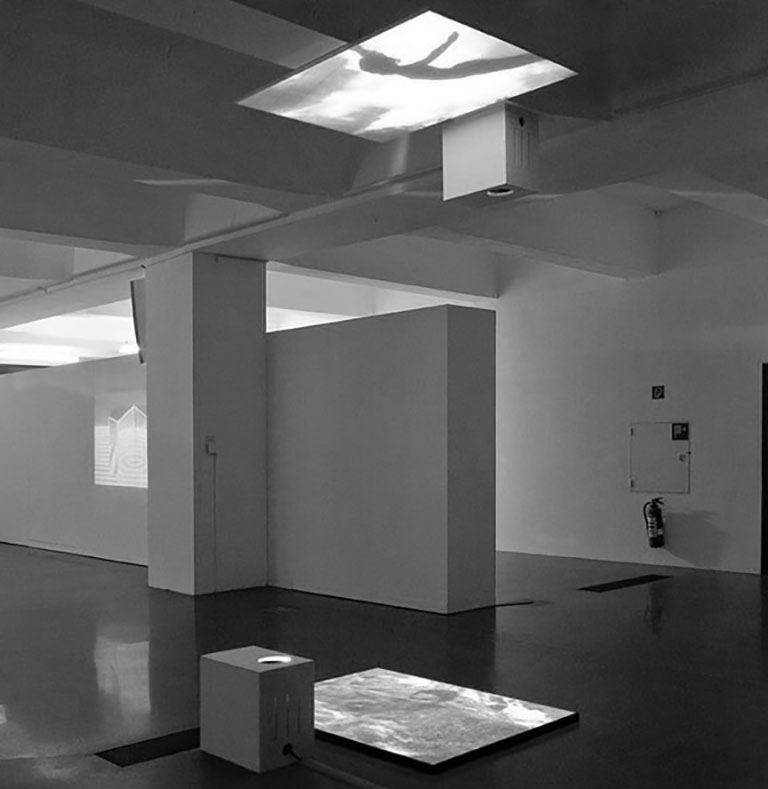INSTALLATION
Like that of his peers, Hans Breder’s earlier concepts of intermedia was squarely centered within the boundaries of the arts: no matter how many of them. It slowly expended to embrace performance, dance, and aspects of the theater. Still, what was activated represented an extension of art consciousness. Lately, perhaps because of his greater concentration on video, the consciousness of his work appears at first to be less his art consciousness than his world consciousness. The latter nearly conforms to public or media consciousness and permits various approaches, many of them unaesthetic in nature. This unaestheticization of the arts is popular among today’s media artists.
-Stephen Foster, Estera Milman,
“The Media as Medium: Hans Breder’s Berlin work,”
Kansas Quarterly, Volume 17, Number 3, 1985

|

|

|
| Ikarus installation, Ostwall Museum, Dortmund | Anti-City map, Technische Universität, Berlin, Berlin. 1984 | Plakat Aktion Frankfurt, City of Frankfurt, Germany. 1980 |
|
ikarus, 1974 [He throws himsolf out into the air, his garments sustain him for a moment; his head, illumined, leaves a trail of light behind.] CHORUS
[He falls, a handsome youth, at his parents’ feet, resembling in death a well-known figure; his mortal part instantly fades, but the aureole rises cometlike into the heavens. Dress, cloak, and lyre are left lying on the ground.] -Goethe, Faust part II |
anti-city, 1984 First shown in Berlin as an installation for a conference on the city and architecture–there is a similar awareness that urban spaces resist reduction to a single camera eye or point of view, since the city is a performance of space mediated by technological apparatuses of power, the media. Anti-City, then, far from reflecting a point of view as an expression merely reducible to the artist’s consciousness of urban space is, in fact, more a representation of the city made up of those performances of urban environment itself. That Anti-City’s images are taped from commercial television, and by means of technological reconceptualizations function as an exploration of how a city culture not only performs or represents itself, but reflects its own negativity through the media. That is, Anti-City explores how a city’s apparatuses of self-representation produce an atmosphere wherein the negativity of urban existence can be expressed as something performed not by conscious expression of a point of view but as a horizon of the things themselves as represented by the media. -Herman Rapaport |
plakat aktion Painting placed in context of construction billboard advertisements by Gestaltreform M. Schul KG, Frankfurt am Main, Germany. |